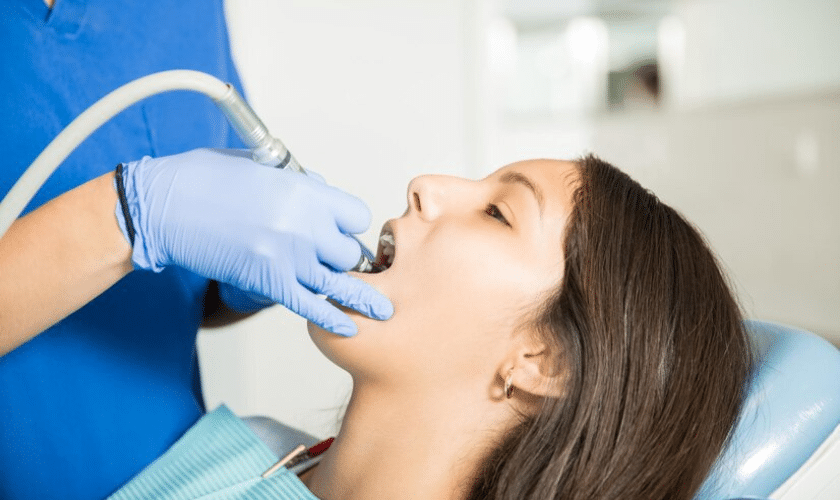
Have you ever wanted to make your smile brighter or enhance its shape? Cosmetic dentistry might be able to help! Cosmetic dentistry is a special field of dental care that focuses on improving the look and feel of teeth and gums. Cosmetic dentists use a variety of techniques to create beautiful smiles while also addressing issues like discoloration, misalignment, chips, cracks, gaps between teeth, and much more. No matter what type of cosmetic dentistry you’re considering, it’s essential to understand the treatments available, potential benefits, and associated costs.
Cosmetic Dentistry: What Is It?
Cosmetic dentistry is an aesthetic dental specialty that focuses on improving the appearance of teeth and gums. Cosmetic dentists have various tools to adjust and reshape teeth while whitening and brightening smiles. Cosmetic dentists often focus on aligning teeth through orthodontic treatment options such as braces or Invisalign®, bonding to fix chips or cracks, veneers for covering discoloration, and more. Cosmetic dentists can even help those missing teeth by providing implants or bridges.
Benefits of Cosmetic Dentistry
Cosmetic dentistry can provide patients with various benefits, including improved appearance and enhanced self-confidence. Cosmetic dental treatments can also help make the teeth stronger and healthier by plugging cavities and filling gaps between teeth. Cosmetic dental procedures may be beneficial for oral health, as they can lead to better alignment and reduce strain on other teeth when biting down. Finally, some cosmetic dentists also offer pain-free treatments requiring minimal recovery time after the procedure.
Types of Cosmetic Dentistry Procedures
The most common types of cosmetic dentistry include:
• Whitening – Also known as tooth bleaching, whitening is used to lighten and brighten teeth. Whitening can be used to remove stains caused by food and beverages, smoking or certain medications.
• Bonding – This procedure involves applying a tooth-colored material to fill in chips or cracks. It’s also used to repair cavities and fill gaps between teeth.
• Veneers – Porcelain veneers are thin shells that attach directly to the front of your existing teeth. They are used primarily for cosmetic purposes but may also help fix chipped or broken teeth.
• Implants – Cosmetic dentists use implants to replace missing teeth with artificial ones made from titanium alloy posts. Implants look and feel like natural teeth and can last a lifetime with proper care.
• Braces – Cosmetic dentists use braces to straighten crooked teeth and fix misaligned bites. Braces are typically made of brackets and wires connected to the front of the teeth that slowly move them into the desired position over time.
Costs of Cosmetic Dentistry
The cost of cosmetic dentistry varies depending on the type of treatment being performed and where it is being done. Generally, whitening treatments tend to be among the least expensive procedures, while implants or full-mouth reconstructions are likely to cost more. Additionally, some insurance companies may cover part or all of the costs for certain procedures depending on their coverage policies. It’s best to consult with a qualified cosmetic dentist to get an estimate of the cost of any treatments you are considering.
Conclusion
Cosmetic dentistry can help improve the look and feel of teeth and gums while also addressing issues like discoloration, misalignment, chips, cracks, and gaps between teeth. Cosmetic dentists use a variety of techniques to create beautiful smiles, including whitening, bonding, veneers, implants, and braces. The costs for these procedures vary widely depending on what is being done and where it is being done. It’s important to Consult with a qualified cosmetic dentist before deciding on any treatments so that you understand all associated costs as well as potential benefits.
A: The results of cosmetic dentistry can last anywhere from several months to several years, depending on the type of treatment. Regular dental visits are crucial for maintaining the health of your teeth and gums and prolonging the effects of any cosmetic dental work you have done.
A: Although rare, there are some risks associated with Cosmetic Dentistry. These include allergies to materials used during the procedure, infection, and damage to existing teeth or gum tissue. Be sure to discuss your concerns with your cosmetic dentist before any treatments.
A1: The dental implant procedure is usually performed under local anesthesia, so it will not be painful. However, there may be some minor discomfort during the healing process, which can be managed with over-the-counter painkillers.



